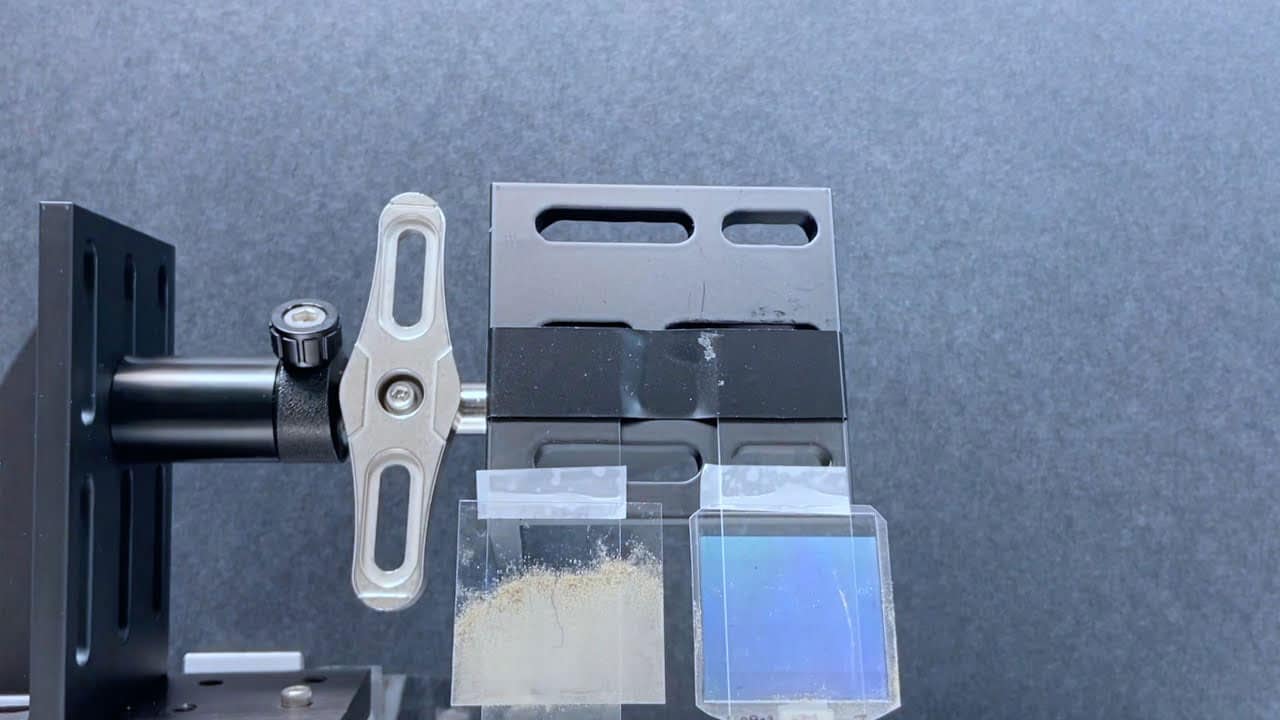
Dust is a common fact of life, and it’s more than just a daily nuisance. Dust accumulation is detrimental to optical elements, electronic devices, and mechanical systems and is a significant problem in space missions and renewable energy deployment.
Now, researchers at the University of Texas at Austin, together with North Carolina-based company Smart Material Solutions, have developed a new method to keep dust from sticking to surfaces. According to the team, the new technology can make many types of materials dust resistant, from spacecraft to solar panels to household windows.
“What we’ve demonstrated here is a surface that can clean itself,” said Chih-Hao Chang, an associate professor in the Cockrell School of Engineering’s Walker Department of Mechanical Engineering and a lead author of the study. “Particulates aren’t able to stick to the surface, so they come off using just the force of gravity.”
The researchers said the discovery essentially involves things the human eye cannot see. In the experiments, the team modified the geometry of flat surfaces to produce a tightly packed nanoscale network of pyramid-shaped structures. These sharp, angular structures make it challenging to stick to the material. Instead, they stick to one another and roll off the material via gravity.
These structures don’t require any extra energy or materials to remove dust. Compare that with more active solutions, such as a car windshield that involves the use of windshield wipers and wiper fluid to clean off the dust.
While anti-dust technology has been around for decades, it has not gained much traction outside of the lab because of scaling challenges. In this latest study, the researchers used fabrication concepts called nano-coining and nanoimprinting, which prints patterns on objects in a modernized version of the way newspapers and photographs were mass-produced during the 1800s.
During the tests, the researchers piled lunar dust on top of their engineered surfaces and then turned each surface on its side. They found that only about 2% of the surface remained dusty, compared with more than 35% of a similar but smooth surface.
Since the research was funded via a grant from NASA‘s Small Business Innovation Research program, the first applications focus on space technology. Space dust is especially pesky because of how high-risk everything becomes in that environment. Moreover, the conditions make cleaning off dust challenging. Dust wreaked havoc on the Apollo missions and has caused Mars rovers to fail.
“There’s not much you can do about lunar dust in space – it sticks to everything, and there’s no real way to wipe it off or spray it off,” said Samuel Lee, a lead author who was an undergraduate researcher in Chang’s group. “Dust on solar panels of Mars rovers can cause them to fail.”
This novel anti-dust technology could also have a tremendous impact on Earth. For instance, it could prevent solar panels from collecting dust and losing efficiency over time. Additionally, it could protect glass windows and, someday, even digital screens such as phones and TVs.
Journal reference:
- Samuel S. Lee, Lauren Micklow, Andrew Tunell, Kun-Chieh Chien, Saurav Mohanty, Nichole Cates, Stephen Furst, and Chih-Hao Chang. Engineering Large-Area Antidust Surfaces by Harnessing Interparticle Forces. ACS Applied Materials & Interfaces, 2023; DOI: 10.1021/acsami.2c19211
New anti-dust technology paves the way for self-cleaning surfaces
Source: Tambay News

0 Comments